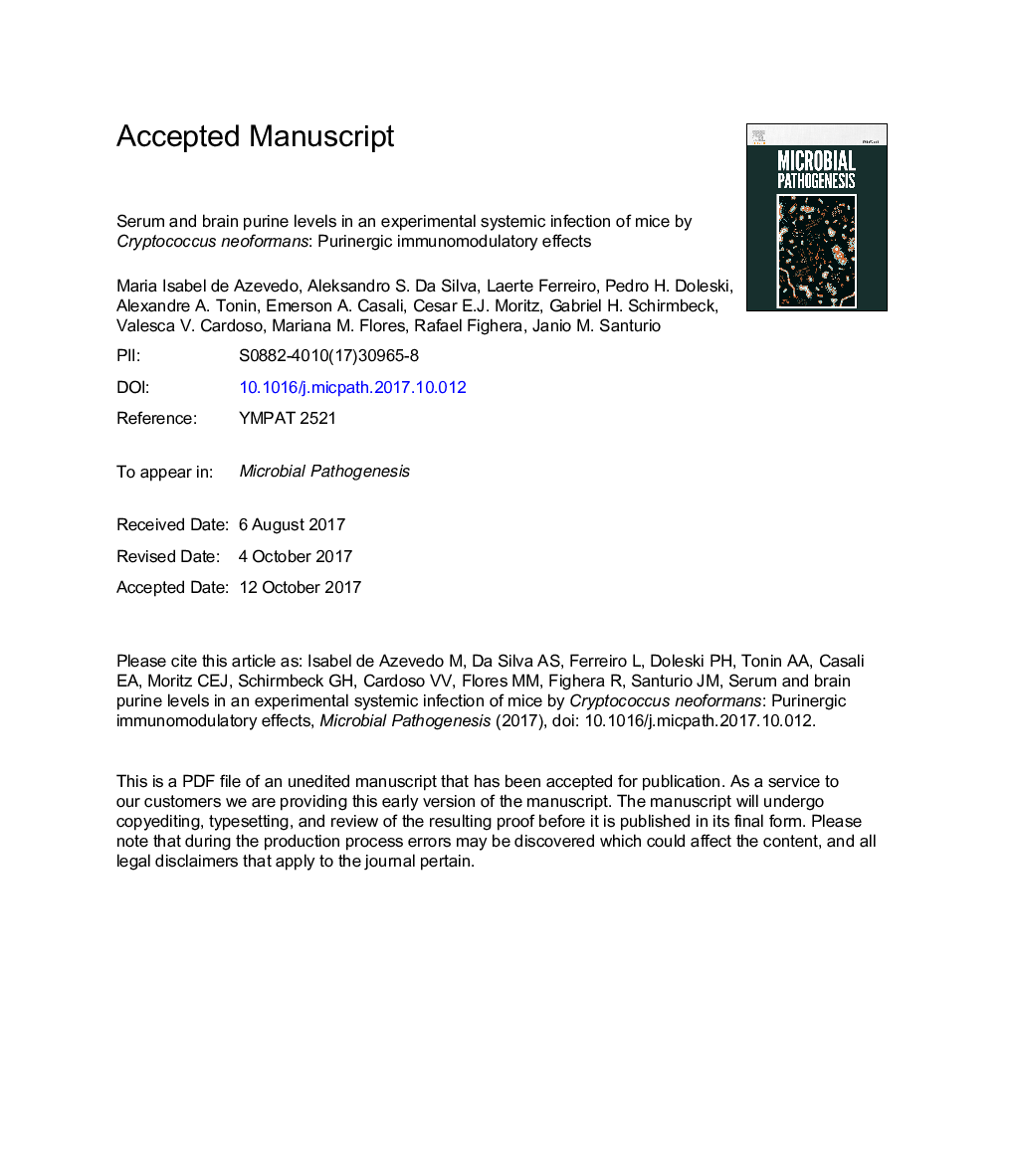| Article ID | Journal | Published Year | Pages | File Type |
|---|---|---|---|---|
| 8749959 | Microbial Pathogenesis | 2017 | 21 Pages |
Abstract
The aim of this study was to evaluate the purine levels in serum and brains of mice experimentally infected by Cryptococcus neoformans. Twenty-four mice were divided into the following groups: a control group (n = 12; Group A) and an infection group with animals that were infected (n = 12; Group B) with a 0.3-mL intraperitoneal injection containing 1.7 Ã 107C. neoformans cells. Blood and brains were collected on days 20 (n = 6 per group) and 50 (n = 6 per group) post-infection (PI). Histopathology and lung and brain cultures were performed to confirm fungal infection and tissue injuries. The levels of adenosine triphosphate (ATP), adenosine diphosphate (ADP), adenosine monophosphate (AMP), adenosine (ADO), inosine (INO), hypoxanthine (HYPO), xanthine (XAN) and uric acid (UA) in brains and serum were measured by high-performance liquid chromatography (HPLC) analysis. At both time points, histopathology analysis revealed inflammatory infiltrates in the brains and lungs of infected mice; clinical signs, such as piloerection and clinical respiratory distress, were also observed. ATP levels were significantly increased on days 20 and 50 PI (P < 0.01) in brains and serum, while brain ADO levels were increased on day 20 PI; brain and serum ADO levels were decreased on day 50 PI. Levels of ADP and AMP did not differ between groups (P > 0.05). Serum levels of INO of infected mice increased only on day 50 PI (P < 0.05). HYPO levels were reduced in the brains of infected animals at both experimental time points and were decreased in serum at day 50 PI (P < 0.05). XAN levels increased in infected mice only in serum on day 50 PI (P < 0.05). The endogenous anti-oxidant uric acid was significantly increased in brain (days 20 and 50 PI) and decreased in serum. It is possible that C. neoformans infection in mice leads to a high ATP/ADO ratio that may improve the brain pro-inflammatory response during both periods, while high ATP levels in serum act as a systemic signal to improve the immune response. Moreover, the anti-oxidant uric acid may increase in the brain to protect inflamed tissue from oxidative stress.
Related Topics
Life Sciences
Immunology and Microbiology
Microbiology
Authors
Maria Isabel de Azevedo, Aleksandro S. Da Silva, Laerte Ferreiro, Pedro H. Doleski, Alexandre A. Tonin, Emerson A. Casali, Cesar E.J. Moritz, Gabriel H. Schirmbeck, Valesca V. Cardoso, Mariana M. Flores, Rafael Fighera, Janio M. Santurio,
